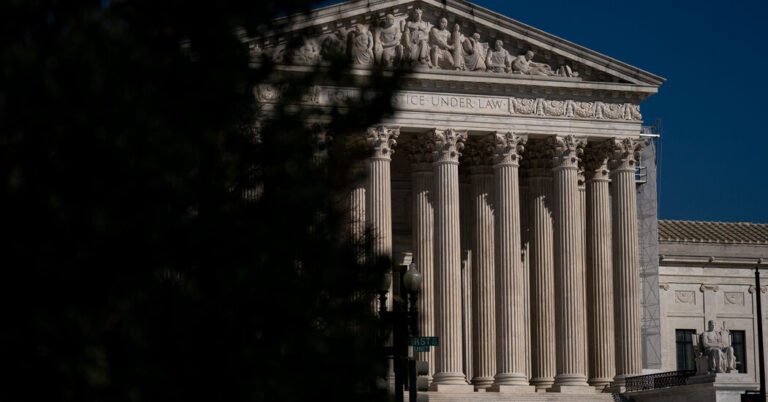
[ad_1]
The Supreme Court refused on Tuesday to reinstate a voting map for the Washington State Legislature that a federal judge had found discriminated against Hispanic voters.
As is the court’s custom when it acts on emergency applications, its brief order gave no reasons. There were no noted dissents.
The case arose from a lawsuit by Hispanic voters who challenged a voting district in the Yakima Valley region that had been drawn by the state’s independent redistricting commission after the 2020 census. The plaintiffs said the district violated the Voting Rights Act by diluting their ability to elect their preferred candidates.
The case had some unusual features, notably that a majority of the challenged district’s voting age population was Hispanic.
In rejecting the map in August, Judge Robert S. Lasnik of the Federal District Court in Seattle said the issue was more complicated than that raw number suggested.
“The question in this case is whether the state has engaged in line-drawing which, in combination with the social and historical conditions in the Yakima Valley region, impairs the ability of Latino voters in that area to elect their candidate of choice on an equal basis with other voters,” he wrote. “The answer is yes.”
He added, “Especially in light of the evidence showing significant past discrimination against Latinos, ongoing impacts of that discrimination, racial appeals in campaigns and a lack of responsiveness on the part of elected officials, plaintiffs have shown inequality in electoral opportunities in the Yakima Valley region.”
After the Legislature failed to require the commission to reconvene to draw a new map, Judge Lasnik last month chose one submitted by the plaintiffs. It redrew 13 of the state’s 49 voting districts. Some observers said the changes generally advantaged Democrats.
That was mistaken, Judge Lasnik wrote, and would be irrelevant were it true. “The court finds that the adopted map does not meaningfully shift the partisan balance of the state and that it was not drawn (or adopted) purposely to favor one political party over the other,” he wrote.
A Republican lawmaker and two voters asked the U.S. Court of Appeals for the Ninth Circuit, in San Francisco, to pause the judge’s ruling while their appeal moved forward. When the appeals court refused, they asked the Supreme Court to intervene and to reject, at least in the short term, what their expert witness called a bizarrely shaped district resembling an “octopus slithering along the ocean floor.”
Their emergency application noted that the percentage of Hispanic voters in the district created in response to the voters’ lawsuit was slightly lower than in the one it challenged.
“The remedy that the district court adopted here is utterly without precedent,” the application said, adding that the new map decreased the Hispanic voting age population from 52.6 percent to 50.2 percent. “Neither plaintiffs nor the state,” the application said, “has identified any instance where a district court has ever purported to remedy vote dilution by diluting the relevant minority’s voting strength further.”
In response, the voters who had challenged the old map said the percentages were outdated — the gap had narrowed, they said, to 52.2 percent and 51 percent — and irrelevant, as the percentages alone do not demonstrate voting power.
The emergency application also noted that voters in the contested district elected a Hispanic Republican to the State Senate in the 2022 election, which was conducted under the old map, by a substantial majority. The candidate, Nikki Torres, received roughly a third to half of the Hispanic vote, depending on the statistical model, the application said.
In a brief urging the justices to leave the new map in place, lawyers for the state wrote that the 2022 election proved nothing. “Just because a candidate belongs to a racial group does not mean that they are preferred by that group,” the brief said.
[ad_2]